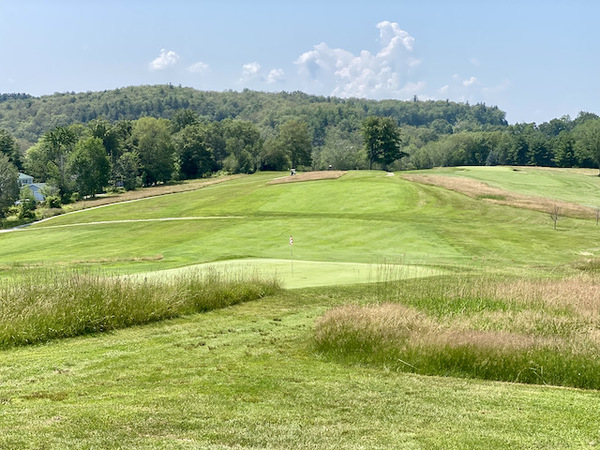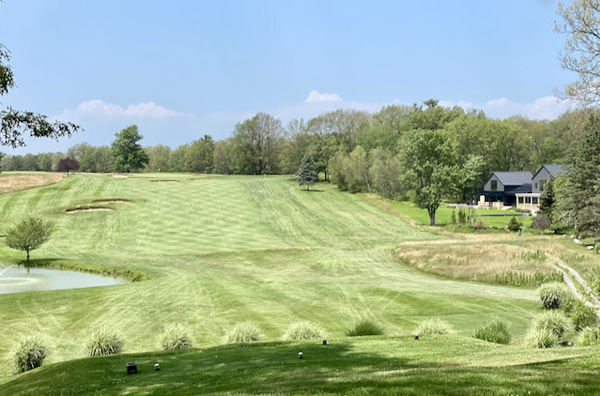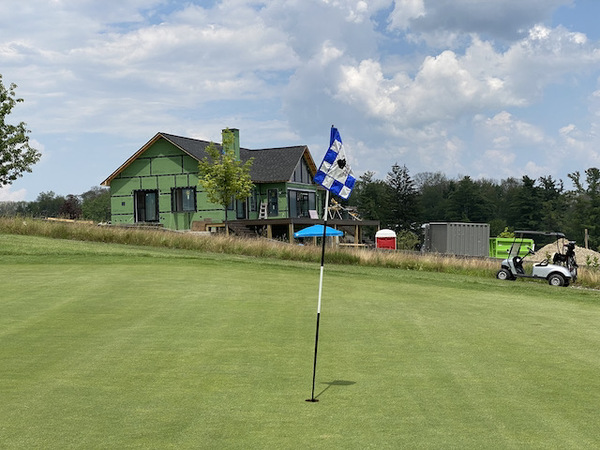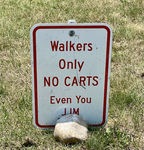I try to make a golfing pilgrimage or two every year to one of my favorite classic golf courses anywhere, Copake Country Club in upstate New York. The golf course, about a 90-minute drive from my Connecticut home, was designed by the legendary Devereux Emmet in the early 1920s, mostly to accommodate the well-heeled New York City folks who took their summer vacations in the cabins that, to this day, still surround the beautiful Copake Lake that lies just below and to the west of the golf course. (There is some dispute about whether Emmet did design Copake, but no dispute about his work at Congressional in Washington, D.C., Bethpage State Park - Green Course, and a good number of layouts much closer to my home outside Hartford, CT. Just prior to the Depression, Emmet designed the first nine holes at Keney Park in Hartford, where I play regularly. I see echoes of Keney in the layout at Copake.)
 Many of the heather-bounded holes at Copake give off a bit of a links course vibe, despite its position in the Berkshire Mountains hills beside a lake.
Many of the heather-bounded holes at Copake give off a bit of a links course vibe, despite its position in the Berkshire Mountains hills beside a lake.I returned to Copake on Thursday with my friend Pete and was impressed with the turf conditions on the course, especially the greens which I forgive for being so tough to read and providing us both with virtually no straight putt all round. They were in excellent condition and moderately fast. The elevated tee boxes provide dramatic views of the tilted fairways and, on some holes, the foothills of the Berkshire Mountains beyond. The multi-story high tees help give an extra boost to well struck drives. Pete and I also found ourselves in earnest discussions about club selection on approaches to the many elevated greens on the course. The layout is a classic, with bunkers only in the right places (in other words, no unnecessary embellishments) and elevation changes that make you think hard about every shot.
But our day at Copake had a bit of the good, the okay and the ugly. Besides the golf course, I label as “good” the many improvements the club has made over the last year. No longer upon arriving at the course do you need to walk up a flight of stairs behind the first tee box to check in with the pro shop. The new, small-but-sleek pro shop, as well as the rest rooms, have been relocated to the base of the clubhouse. Pay your modest fee ($40 if you are a walker, $45 with cart (a Monday thru Thursday senior special), throw your clubs on one of the gas-powered carts and away you go. The laid-back atmosphere is such that you can head out before your tee time if no one is ahead of you. (We got out a half hour early.) The total overhauls of the dining room and bar are dramatic, with lots of glass in the form of sliding doors that open onto two separate outdoor dining areas and provide views of #1 and #10 fairways, both dramatic uphill slopes mowed in contrasting wide green stripes that remind me of the lush fields of major baseball stadia.
 Copake is pretty much free of adjacent housing, except for a new one under construction behind the 18th hole (see below) and this one, to the right of the 10th fairway.
Copake is pretty much free of adjacent housing, except for a new one under construction behind the 18th hole (see below) and this one, to the right of the 10th fairway.In addition to those improvements, we noted the addition, just to the left of the first green, of a small veterans’ memorial park, with a 20-foot-wide granite monument that displayed plaques honoring those who gave their lives for the nation, a row of flags and a few benches. Copake is a strongly patriotic club, with a huge flagpole and flag behind the first green, and a large flag pinned against a barn behind the 18th green.
The “okay” of our round was the availability of drinking water on the course on a sweltering day, just two stations on the front nine – the water was not cold – and only one I recall on the back nine. (It was so hot that Pete, who prepares for all contingencies and who pulled his golf cart over hill and dale, changed his clothes after nine and then again just before we had lunch.) At the end of nine, I walked up the afore-mentioned stairs to the restaurant/bar to get a much-needed Gatorade only to find out from the waitress that, “You can only get Gatorade in the pro shop.” I declined to walk back down in the opposite direction of the 10th tee and settled for an Arnold Palmer, which my friendly waitress kindly topped off for me after I took a big initial gulp.
 Home under construction behind the 18th hole, one of only two directly on the golf course. Expect more homes in the coming years.
Home under construction behind the 18th hole, one of only two directly on the golf course. Expect more homes in the coming years.Also “okay” were the couple of homes under construction on the golf course, the most “intrusive,” visually, immediately behind the 18th green. It was a bit of a shock given the totally rural and parkland nature to the course when I first played it 15 years ago. It has pretty much remained that way since, but the home behind the 18th green and another large one already built beside the 10th fairway will likely be joined by others in the coming years. Such is progress…
The investments at Copake are certainly impressive and obviously geared toward the quickest return. I noted at lunch that prices on the restaurant menu had gone up considerably, with the “house” burger listed at $22. (In fairness, it had a lot of stuff piled on it, but still seemed a tad overpriced.) But here comes the ugly part of the day. The cart paths were a disaster, all of them way worse than I recalled from prior rounds. In the best of times, the rocks that formed the unpaved paths shifted enough under cart tires and from harsh winter conditions to make for an uncomfortable ride. Yesterday that ride was downright dangerous. At places along the path, often on steep hills, the ground was severely gouged and forced me to creep over and around the holes. Exposed tree roots made the journey even rougher and, where I could, I took a parallel path along the rough. In short, the ride was a chiropractic nightmare, especially for someone who has been fighting back issues lately (as many of the baby boomer types who play Copake surely endure). But just as bad, and adding to the danger factor, was the golf cart itself which seemed not only long in the tooth but lacking the speed governor that most modern golf carts have. On a course as hilly as Copake, a golf cart capable of running away from you on a downhill drive is dangerous. I found myself applying a pretty-steady push on the brake on every downhill ride, which can’t be good for the longevity of the brakes or tires. Playing tricky uphill and downhill shots for 18 holes is exhausting enough.
places along the path, often on steep hills, the ground was severely gouged and forced me to creep over and around the holes. Exposed tree roots made the journey even rougher and, where I could, I took a parallel path along the rough. In short, the ride was a chiropractic nightmare, especially for someone who has been fighting back issues lately (as many of the baby boomer types who play Copake surely endure). But just as bad, and adding to the danger factor, was the golf cart itself which seemed not only long in the tooth but lacking the speed governor that most modern golf carts have. On a course as hilly as Copake, a golf cart capable of running away from you on a downhill drive is dangerous. I found myself applying a pretty-steady push on the brake on every downhill ride, which can’t be good for the longevity of the brakes or tires. Playing tricky uphill and downhill shots for 18 holes is exhausting enough.
In short, I love the Copake Country Club golf course, I like what the club owners have done to improve the facilities, but a strong investment and total overhaul also needs to be made on the cart paths, and quickly. Here’s hoping that proceeds from land sales are plowed into the reconstruction of the cart paths. The only thing I want to be afraid of at Copake are the left to right putts.



